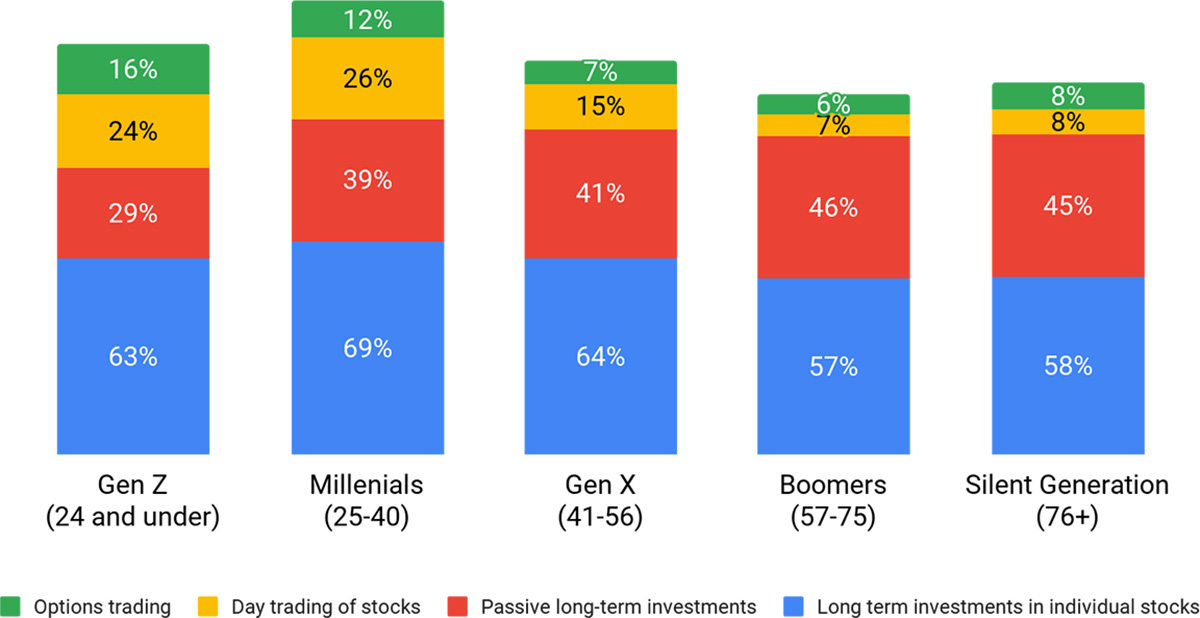

Finance
What Do You Need To Cash Savings Bonds
Published: January 16, 2024
Discover how to cash savings bonds and unlock your finance potential. Learn what you need and get started on maximizing your savings today!
(Many of the links in this article redirect to a specific reviewed product. Your purchase of these products through affiliate links helps to generate commission for LiveWell, at no extra cost. Learn more)
Table of Contents
- Introduction
- Understanding Savings Bonds
- Types of Savings Bonds
- Requirements for Cashing Savings Bonds
- Step 1: Gather Necessary Documents
- Step 2: Determine Ownership of Bonds
- Step 3: Verify Bond Eligibility
- Step 4: Complete the Required Forms
- Step 5: Choose a Method of Cashing the Bonds
- Step 6: Submit the Documents
- Step 7: Wait for Bond Redemption
- Conclusion
Introduction
Welcome to our comprehensive guide on cashing savings bonds. Whether you have recently stumbled upon a forgotten stash of bonds or are considering cashing in your current holdings, we are here to provide you with a step-by-step understanding of the process.
Savings bonds are a popular investment tool issued by the U.S. government. They are considered a safe and reliable way to save money over a fixed period of time. However, there may come a time when you decide to cash in your savings bonds for a variety of reasons, such as needing the funds for an important purchase or investment.
This article will help you navigate the process of cashing savings bonds, providing valuable information on the types of savings bonds available, the necessary requirements for cashing them, and the step-by-step procedure you need to follow. By the end of this guide, you will have a clear understanding of how to effectively redeem your savings bonds.
It’s important to note that the specific steps and requirements for cashing savings bonds may vary slightly depending on the type of bond and the financial institution you choose to process the transaction. However, our guide will give you a general overview of the process, ensuring that you are well-prepared to complete the necessary steps.
So, let’s dive in and explore the world of cashing savings bonds, helping you make informed financial decisions and get the most out of your investments.
Understanding Savings Bonds
Savings bonds are a type of investment issued by the U.S. Department of the Treasury. They are considered a low-risk investment option and are often used as a long-term saving tool. When you purchase a savings bond, you are essentially lending money to the government, which will be repaid with interest over a specific period of time.
There are two main types of savings bonds: Series EE and Series I. Series EE bonds are a traditional option that earn a fixed interest rate over a period of 20 years. On the other hand, Series I bonds are inflation-indexed bonds that adjust their interest rates based on changes in the Consumer Price Index (CPI).
One important aspect to note is that savings bonds are not designed for short-term investments. They require a minimum holding period before they can be redeemed for their full value. With Series EE bonds, this minimum holding period is one year, while for Series I bonds, it is at least one year and the bond must be held for a minimum of five years to avoid incurring a penalty.
Savings bonds have several advantages. First, they are backed by the U.S. government, making them a secure and safe investment option. Second, they offer a guaranteed return on investment, as the interest rates are fixed or adjusted based on inflation. Lastly, the interest earned on savings bonds is exempt from state and local income taxes, making them a potentially tax-efficient investment.
Understanding the details of your savings bonds, such as the maturity date, interest rate, and current value, is crucial when considering whether to cash them in. It’s important to evaluate your financial goals and needs to determine the appropriate time to redeem your savings bonds.
Now that we have a basic understanding of savings bonds, let’s explore the different types of bonds available and the requirements for cashing them in.
Types of Savings Bonds
When it comes to savings bonds, there are two main types available: Series EE Bonds and Series I Bonds. Let’s take a closer look at each type:
Series EE Bonds:
Series EE Bonds are the most common type of savings bonds. They are issued at a discounted price and accrue interest over a period of 20 years. These bonds are typically purchased at half of their face value and accumulate interest monthly. The interest is added to the bond’s value and can be redeemed upon maturity.
One key feature of Series EE Bonds is that they guarantee a minimum interest rate, which remains fixed for the entire life of the bond. This ensures that your investment will grow steadily over time. Series EE Bonds can be purchased in electronic form through the TreasuryDirect website or in paper form.
Series I Bonds:
Series I Bonds, on the other hand, are inflation-protected bonds. The interest rates on these bonds are composed of a fixed rate plus the rate of inflation as measured by the Consumer Price Index (CPI). The interest rate on Series I Bonds changes every six months, allowing investors to keep up with inflation and potentially earn a higher return.
Similar to Series EE Bonds, Series I Bonds can be purchased at face value and accrue interest over a period of 30 years. They can be bought in electronic form through the TreasuryDirect website or in paper form.
Both Series EE and Series I Bonds have a minimum holding period of one year, which means you cannot cash them before this time without incurring a penalty. Additionally, it’s worth mentioning that savings bonds can only be purchased in denominations ranging from $25 to $10,000.
Understanding the different types of savings bonds available will help you determine which one aligns with your investment goals and financial needs. Now that we have explored the types of savings bonds, let’s move on to the requirements for cashing them in.
Requirements for Cashing Savings Bonds
Before you can cash in your savings bonds, you’ll need to ensure that you meet the necessary requirements. These requirements may vary depending on the financial institution or method you choose for the redemption process. However, here are some general requirements to keep in mind:
Ownership Verification:
First and foremost, you need to prove that you are the rightful owner of the savings bonds you wish to cash. To do this, you will typically need to provide identification documents such as a valid government-issued photo ID (e.g., driver’s license, passport). If the bonds are held jointly, both parties must be present with appropriate identification or provide necessary documentation to prove their relationship.
Bond Eligibility:
Not all savings bonds are eligible for immediate cashing. Some bonds have specific maturity requirements, which means they must be held for a certain period before they can be redeemed. Ensure that your bonds have reached their minimum holding period to avoid any penalties or loss of interest.
Required Forms:
To cash your savings bonds, you will typically need to complete the appropriate redemption forms. These forms can usually be found on the TreasuryDirect website or obtained from the financial institution where you plan to cash the bonds. The forms will require you to provide details such as the bond serial numbers, bond issue dates, and the desired method of payment.
Method of Cashing:
You will also need to decide how you want to cash your savings bonds. There are a few options available, including redeeming them electronically through TreasuryDirect, cashing them at a financial institution, or mailing the bonds to the Treasury Retail Securities Site for processing. Choose the method that is most convenient for you and ensure that you follow the specific instructions provided for that method.
It’s important to note that certain financial institutions may have additional requirements or processes specific to their policies. It’s a good idea to contact the institution beforehand or visit their website to familiarize yourself with their procedures and any additional documentation they may require.
Now that you understand the requirements for cashing savings bonds, let’s move on to the step-by-step process you need to follow.
Step 1: Gather Necessary Documents
Before you begin the process of cashing your savings bonds, it’s essential to gather all the necessary documents. Having these documents on hand will help streamline the redemption process and ensure a smooth transaction. Here are the documents you’ll typically need:
Identification Documents:
You will need a valid government-issued photo ID, such as a driver’s license or passport, to prove your identity. This is a standard requirement to verify that you are the rightful owner of the savings bonds you wish to cash. If the bonds are jointly owned, ensure that both parties have suitable identification.
Social Security Number:
You will typically be asked to provide your Social Security Number (SSN) when cashing savings bonds. This is to ensure accurate reporting of the transaction for tax purposes. Make sure you have your SSN readily available to provide when completing the necessary forms or when dealing with financial institutions.
Savings Bond Certificates:
If you have physical savings bond certificates, locate them and keep them in a secure place until you are ready to cash them. The certificates contain important information, such as the bond serial numbers and issue dates, which will be required during the redemption process. If you’ve lost your bond certificates, you may still be able to redeem the bonds by providing the necessary information requested by your financial institution.
It’s important to note that if you have electronic savings bonds held in your TreasuryDirect account, you won’t need the physical bond certificates. The necessary information can be accessed online through your account.
Proof of Relationship (if applicable):
If you are cashing jointly owned savings bonds and one of the owners is not present during the redemption process, you’ll need to provide proof of your relationship with the absent owner. This could include marriage certificates, domestic partnership agreements, or other legal documentation as specified by the financial institution.
Having these documents prepared and readily available will help ensure a smooth and efficient redemption process. It’s always a good idea to make copies of your identification documents and bond certificates for your records before submitting them.
With the necessary documents in hand, you are now ready to move on to the next step, which is determining the ownership of your savings bonds.
Step 2: Determine Ownership of Bonds
Before you proceed with cashing your savings bonds, it’s crucial to determine the ownership of the bonds. This step is essential, especially if you are cashing bonds that are jointly owned or inherited. Here’s what you need to do:
Review Bond Ownership:
Take a close look at the savings bond certificates or your TreasuryDirect account to confirm the ownership details. If the bonds are solely in your name, you can proceed with the redemption process on your own. However, if the bonds are jointly owned, you’ll need to ensure that all owners are present, unless there are specific instructions from the financial institution regarding alternative verification methods.
Consult Legal Documentation:
If you are cashing savings bonds that were inherited, check any legal documentation, such as a will or trust, to determine the rightful ownership. In such cases, you may need additional documentation, such as a death certificate or proof of your relationship to the deceased owner, to validate your claim.
Contact the Financial Institution:
If you are unsure about the ownership arrangements or have any doubts, it’s advisable to reach out to the financial institution where you plan to cash the bonds. They will be able to provide guidance and inform you of any specific requirements or procedures involved in verifying ownership.
It’s important to ensure that the ownership of the savings bonds is clear and properly documented to prevent any complications during the redemption process. By taking the time to determine ownership upfront, you’ll avoid potential delays or issues down the line.
With the ownership of the bonds established, you can now proceed to verify the eligibility of the savings bonds for redemption in Step 3.
Step 3: Verify Bond Eligibility
Once you have determined the ownership of your savings bonds, the next step is to verify their eligibility for redemption. Not all savings bonds can be cashed in immediately, as some have specific maturity requirements. Here’s what you need to do to verify bond eligibility:
Check Holding Period:
Review the maturity date and minimum holding period of your savings bonds. For Series EE bonds, the minimum holding period is one year, while for Series I bonds, it is at least one year, with a recommended minimum of five years to avoid penalties. Ensure that your bonds have reached the minimum holding period before attempting to redeem them.
Calculate Current Value:
Estimate the current value of your savings bonds to determine if it’s the right time to cash them in. You can use the Savings Bond Calculator provided by the U.S. Department of the Treasury to get an accurate value based on the bond’s interest rate and remaining time to maturity.
Consider Interest Accrual:
Take into account the interest that has accrued on your savings bonds. For Series EE bonds, interest is added monthly, while for Series I bonds, interest is added semi-annually. It’s important to note that interest stops accruing once the bond reaches its final maturity or is redeemed.
Review Redemption Penalties:
Be aware of any penalties associated with redeeming your savings bonds before their full maturity. If you choose to redeem Series I bonds before the five-year mark, you may forfeit a portion of the last three months’ interest. Ensure that you are familiar with the redemption rules specific to your bonds to avoid any surprises.
By verifying the eligibility of your savings bonds for redemption, you can make an informed decision about whether it’s the right time to cash them in. If your bonds have reached the minimum holding period, have accrued significant interest, and align with your financial goals, you can proceed confidently to the next steps of the redemption process.
In the next step, we will discuss the required forms and documents you need to complete for cashing your savings bonds.
Step 4: Complete the Required Forms
Once you have verified the eligibility of your savings bonds for redemption, it’s time to complete the necessary forms to initiate the cashing process. The specific forms required may vary depending on the financial institution or method you choose for redemption. Here’s what you need to do:
Obtain the Required Forms:
Visit the website of the financial institution where you plan to cash your savings bonds or contact them directly to obtain the appropriate redemption forms. These forms may also be available on the TreasuryDirect website if you plan to redeem the bonds electronically.
Provide Bond Information:
When completing the redemption forms, you will need to provide specific details about your savings bonds. This typically includes the bond serial numbers, issue dates, denominations, and current values. You can find this information on the bond certificates if you have physical bonds or by accessing your TreasuryDirect account if your bonds are held electronically.
Select Method of Payment:
Choose how you want to receive the cash from your savings bonds. You may have the option to receive a check, have the funds directly deposited into your bank account, or reinvest in other eligible securities. Select the method that aligns with your preferences and financial goals.
Review and Sign:
Read through the redemption forms carefully, ensuring that you understand the terms and conditions. Sign the forms where required to confirm your agreement and acknowledgment of the redemption process. Double-check that all the information provided is accurate and up to date.
It’s important to note that if you are cashing jointly owned savings bonds, each owner may need to complete and sign the redemption forms, depending on the financial institution’s policy. Clarify with the financial institution if they require all owners to be present or if there are alternative verification methods available.
With the required forms completed and signed, you are now ready to move on to the next step of choosing a method for cashing your savings bonds.
Step 5: Choose a Method of Cashing the Bonds
After completing the necessary forms to cash your savings bonds, the next step is to choose a method for the redemption process. There are several options available, each with its own advantages and considerations. Here are the common methods you can choose from:
Electronic Redemption:
If your savings bonds are held electronically through TreasuryDirect, you can choose to redeem them electronically as well. This method offers convenience and ease of use. Simply log in to your TreasuryDirect account, follow the instructions for redeeming bonds, and provide the necessary bond information. The funds will be transferred directly to your designated bank account.
Financial Institution:
You can also choose to cash your savings bonds at a financial institution, such as a bank or credit union. Many financial institutions offer redemption services for savings bonds. Contact your preferred institution beforehand to ensure they provide this service and inquire about any specific requirements or procedures they have in place.
Mail-in Redemption:
If you prefer a more traditional approach, you can mail your physical savings bond certificates along with the completed redemption forms to the Treasury Retail Securities Site designated for processing. It’s important to follow the mailing instructions provided by the site and consider using a secure and trackable method to ensure the safe delivery of your bonds.
When choosing a method of cashing your bonds, consider factors such as convenience, processing time, and any associated fees. Each method has its own benefits and considerations, so select the one that aligns with your preferences and needs.
Once you have chosen a method, follow the specific instructions provided by the financial institution or the TreasuryDirect website to complete the redemption process.
In the next step, we will discuss how to submit your documents for bond redemption.
Step 6: Submit the Documents
Now that you have completed the necessary forms and chosen a method for cashing your savings bonds, it’s time to submit the required documents for bond redemption. The exact process for document submission may vary depending on the method you have selected. Here’s what you need to do:
Electronic Redemption:
If you have chosen electronic redemption through TreasuryDirect, you will typically submit your documents online. Follow the instructions provided on the website for uploading the necessary forms and any additional documentation required. Ensure that you accurately provide the requested information and double-check that all documents are attached before submitting.
Financial Institution Redemption:
If you plan to cash your savings bonds at a financial institution, you will need to bring your completed redemption forms and any supporting documentation to the designated branch. Present your identification documents, bond certificates, and any additional required paperwork to the bank representative. They will guide you through the submission process and verify the information provided.
Mail-in Redemption:
If you have opted for mail-in redemption, carefully review the instructions provided by the Treasury Retail Securities Site. Prepare your physical bond certificates, redemption forms, and any supporting documentation requested. Place them in an envelope and send them to the designated address using a secure and trackable mailing method. It’s important to keep a copy of all documents for your records.
Regardless of the redemption method, make sure that all the required documents are properly filled out, signed, and submitted in a timely manner. This will help facilitate the smooth processing of your bond redemption.
Now that you have submitted your documents, the final step is to patiently wait for the bond redemption process to be completed. In the next and final step, we will discuss what to expect during this waiting period.
Step 7: Wait for Bond Redemption
After submitting the required documents for bond redemption, the final step is to patiently wait for the process to be completed. The length of time it takes to redeem your savings bonds can vary depending on factors such as the method of redemption, the financial institution involved, and overall processing times. Here’s what to expect during this waiting period:
Processing Time:
The processing time for bond redemption can range from a few days to several weeks, depending on the circumstances. If you have chosen electronic redemption through TreasuryDirect, the transaction may be processed relatively quickly. On the other hand, if you have opted for mail-in redemption or are using a financial institution, there may be additional processing steps involved that can extend the timeline. It’s important to be patient and allow ample time for the redemption process to be completed.
Communication and Updates:
During the waiting period, it’s always a good idea to stay in touch with the financial institution or service you have chosen for redemption. Check their website or contact their customer service representatives to inquire about the status of your redemption. They may be able to provide updates on the progress of your application and give you an estimated timeframe for the completion of the redemption. Be sure to have your identification and bond information ready when seeking updates.
Notification of Redemption:
Once your savings bonds have been successfully redeemed, you will typically receive notification of the redemption. This could be in the form of an email, letter, or a notification through your TreasuryDirect account. The notification will confirm that your savings bonds have been redeemed, and if applicable, provide details about the method of payment you have selected. Review the notification carefully to ensure accuracy and address any discrepancies with the financial institution or service provider if necessary.
Remember, it’s essential to exercise patience during this waiting period. Keep track of important dates, maintain open communication with the service provider, and follow up if needed. Soon enough, you will receive confirmation of the successful redemption of your savings bonds.
With the completion of Step 7, you have successfully navigated the process of cashing your savings bonds. Congratulations on taking the necessary steps to redeem your investment! Now you can use the funds for your intended purpose or explore other investment opportunities.
Finally, don’t forget to keep proper records of the redeemed savings bonds and any associated documentation for your personal reference and financial records.
Conclusion
Cashing in savings bonds can be a straightforward process when you have the right information and follow the necessary steps. By understanding the basics of savings bonds, verifying bond eligibility, gathering the required documents, completing the necessary forms, choosing a redemption method, submitting your documents, and patiently waiting for the redemption process to be completed, you can successfully redeem your savings bonds and access the funds you need.
Throughout this guide, we have covered the different types of savings bonds, the requirements for cashing them, and provided a comprehensive step-by-step process to guide you through the redemption process. It’s important to note that specific procedures and requirements may vary depending on the financial institution or method you choose for redemption. Therefore, it’s always a good idea to consult your chosen institution or review the official guidelines provided by the U.S. Department of the Treasury for the most accurate and up-to-date information.
Remember to gather all necessary documents, determine the ownership of your bonds, verify their eligibility for redemption, complete the required forms accurately and sign them, choose a convenient redemption method, submit the required documents, and patiently wait for the redemption process to be completed. Throughout this process, maintaining open communication with the financial institution or service provider will help ensure a smooth and efficient experience.
Cashing in your savings bonds can provide financial flexibility and access to funds that may be needed for various purposes. Whether you’re planning to make a major purchase, invest in another opportunity, or simply want to access the value of your bonds, following the steps outlined in this guide will help you navigate the process successfully.
As with any financial transaction, it’s important to review your own unique circumstances and consult with a financial advisor if needed. They can provide personalized guidance based on your specific financial goals and circumstances.
Congratulations on taking the initiative to cash in your savings bonds! By following the steps outlined in this guide, you are well on your way to unlocking the value of your investment and putting it to good use.














